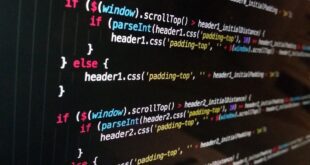Create Powerful UIs with React Components
React is a popular JavaScript library that revolutionized the way user interfaces are built. With its reusable components and virtual DOM, it makes the task of UI development simpler and more efficient. In this article, we’ll explore how React components can be used to create powerful and delightful UIs.
Embrace Component Reusability
One of the key benefits of React is its ability to build reusable components. Instead of writing repetitive code for similar UI elements, we can encapsulate them within reusable components. This not only saves development time but also improves the overall maintainability of the code.
For example, we might have a Button component that can be used throughout our application. By defining common properties like color, size, and onClick event handlers as props, we can create different variations of this button, adapting it to various contexts. The reusability of components is truly a game-changer.
Stay in Sync with the Virtual DOM
The virtual DOM is at the core of React’s efficiency. With a real DOM, whenever a change is made to the UI, the entire DOM tree typically needs to be re-rendered. This can be a slow and resource-intensive process, especially as the complexity of the UI grows.
In React, the virtual DOM acts as a lightweight replica of the real DOM. When changes occur, React compares the virtual DOM with the real DOM, identifies the minimal updates required, and efficiently performs those updates. This means that only the necessary changes are made, resulting in faster and more optimized UI updates.
Add Interactivity with State
React’s component encapsulation goes hand in hand with its state management capabilities. By maintaining an internal state within a component, we can orchestrate interactive UIs that respond to user actions and update accordingly.
For example, let’s say we’re building a simple counter component. We can define a state variable within the component to keep track of the current count. Whenever the user clicks a button to increment or decrement the count, the state is updated, and React automatically re-renders the component to reflect the new value. This seamless interplay between state and UI enables dynamic and engaging user experiences.
Externalize UI Logic with Higher-Order Components
React’s higher-order components (HOCs) provide a powerful pattern for externalizing and reusing UI logic. HOCs are functions that wrap around components, providing additional capabilities without altering the original component’s behavior.
For instance, if we have multiple components that need access to some shared functionality, such as handling authentication or fetching data from an API, we can create an HOC that encapsulates this logic. This allows us to abstract away the complexity and reuse the HOC across different components, promoting code consistency and better maintainability.
Effortlessly Style Components with Component Libraries
Last but not least, React’s flexibility allows us to easily incorporate popular component libraries to enhance our UIs. These libraries, such as Material-UI or Ant Design, provide pre-built and beautifully designed React components that can be seamlessly integrated into our projects.
By leveraging these component libraries, we can benefit from the expertise of UI designers and easily ensure visually appealing and consistent designs. The availability of ready-to-use components and customizable styling options significantly accelerates UI development, promoting productivity and delightful user experiences.
In conclusion, React components empower developers to build powerful and beautiful user interfaces. By embracing reusability, harnessing the virtual DOM, managing component state, utilizing higher-order components, and leveraging component libraries, we can create compelling UIs that engage users and make our applications shine.
 Mind Uncharted Explore. Discover. Learn.
Mind Uncharted Explore. Discover. Learn.




